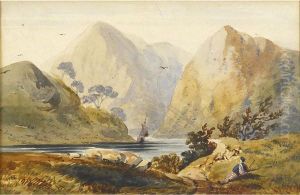Charles D'Oyley Paintings
Charles D'Oyley was a British artist, born in 1781 in Murshidabad, India, during the time when India was under British colonial rule. He was a painter and lithographer best known for his works depicting Indian scenery, culture, and life during the early 19th century. D'Oyley's artistic career was closely tied to his life as a British colonial official, which provided him the opportunity to travel and document his experiences through art.
D'Oyley was educated in England but returned to India in 1808 to work for the East India Company. His position allowed him extensive travel throughout the country, where he developed an interest in the local landscape and the diverse customs of its people. His artworks include a variety of subjects, from landscapes and cityscapes to scenes of everyday life and portraits, often characterized by a keen eye for detail and a fascination with the exotic qualities of the subcontinent.
He became a prominent figure within the artistic circles of Calcutta (now Kolkata), where he was a founding member of the Calcutta School of Art. D'Oyley's work was influential in shaping European perceptions of India, and his paintings and lithographs were among the first to provide a visual account of the region to audiences back in Britain. His notable works include the publication 'Views of Calcutta and its Environs' which was a significant contribution to the genre of topographical illustration.
D'Oyley's artistic output was prolific, and he continued to produce works until his death in 1845. Although he was not as well-known as some of his contemporaries, his work provides an important record of British India and is still appreciated for its historical value and artistic merit. Today, his works are held in various collections around the world, including the British Library and the Victoria and Albert Museum in London.
